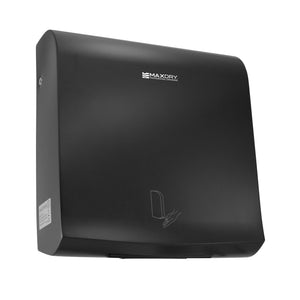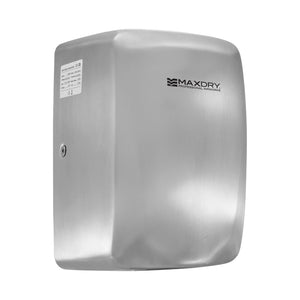Effective Ventilation Techniques
Whether in residential or business settings, adequate ventilation is crucial to preserving a healthy indoor atmosphere. Installing the proper ventilation systems may greatly improve indoor air quality (IAQ), lower energy consumption, and increase comfort in light of the rising concerns about air pollution and energy efficiency.
This article examines realistic solutions catered to various demands, the significance of ventilation, and efficient ventilation strategies.
Understanding the Importance of Ventilation
To preserve the balance between fresh air and indoor air quality, ventilation is essential. Inadequate ventilation may result in:
-
Accumulation of pollutants, including volatile organic compounds (VOCs), dust, and allergens.
-
High humidity levels promote the growth of germs and mould.
-
Health conditions include exhaustion, headaches, and respiratory disorders.
-
A safe and comfortable interior environment for residents is created by properly managing airflow, which guarantees that pollutants are diluted and evacuated.
Types of Ventilation Systems
Mechanical ventilation systems and natural ventilation techniques are the two main types of ventilation systems. Each has a distinct function and performs best under particular circumstances.
-
Natural Ventilation Methods
Natural ventilation replaces interior air with outside air movement. It is a well-liked option in regions with adequate conditions since it is economical and energy-efficient.
-
Cross Ventilation: This method allows air to easily move between spaces by positioning apertures, such as windows or vents, on opposing sides of a structure. It performs especially effectively in areas where daytime and nighttime temperatures differ significantly.
-
Stack Ventilation: Cooler air enters through lower-level apertures, while warm air naturally rises, generating an upward breeze. This technique works well in structures with skylights or high ceilings.
Although mechanical systems may need to be included for best results, natural ventilation techniques are particularly good at lowering indoor temperatures in homes.
-
Mechanical Ventilation Systems
Mechanical ventilation systems offer regulated airflow to sustain air exchange rates in spaces when natural ventilation is insufficient.
-
Exhaust Ventilation Systems: Often found in kitchens and bathrooms, these systems draw in fresh air while expelling smells and stale air.
-
Energy-Efficient Ventilation: By recycling heat while preserving enough airflow, energy recovery ventilators (ERVs) and heat recovery ventilators (HRVs) in contemporary HVAC systems reduce energy loss.
-
Hybrid Ventilation Systems: These balance indoor air quality and energy efficiency by combining mechanical and natural ventilation.
Strategies for Efficient Ventilation in Residential and Commercial Structures
Home Ventilation
The goal of home ventilation is to provide a cozy and healthy living environment. Typical methods include:
-
Spot Ventilation: To eliminate humidity and stop mould growth, install exhaust fans in damp spaces like kitchens and bathrooms.
-
Whole-House Ventilation: Energy-efficient centralized systems, like ERVs, guarantee steady circulation throughout the house.
Commercial Building Ventilation
To manage high occupancy and pollution levels, large structures like offices and industrial facilities need strong ventilation systems.
-
Central HVAC Systems: These systems effectively distribute conditioned air throughout various areas of a building and are outfitted with zoning capabilities.
-
Industrial-Grade Air Purifiers: Essential for removing airborne contaminants in factories, hospitals, and laboratories.
Energy-Efficient Ventilation: Environmental and Financial Savings
Energy-efficient ventilation is more crucial than ever as sustainability gains traction. Eco-friendly building designs may significantly lower energy use without sacrificing indoor air quality.
-
Use variable-speed fans and programmable thermostats to modify airflow according to occupancy and meteorological conditions.
-
Reduce interior heat accumulation and the demand for cooling by using insulation and light-coloured roofing materials.
-
Think about installing environmentally friendly ventilation and hand drying systems in toilets. High-speed hand dryers with HEPA filters are one example of a system that improves airflow and lowers energy consumption while promoting cleanliness.
Airflow and Hand Drying Efficiency
One important but sometimes disregarded aspect of total building ventilation is restroom ventilation. Hygiene is maintained while energy loss is decreased with proper airflow and hand drying effectiveness.
-
By capturing germs and allergens, high-speed hand dryers with air filtration systems enhance the quality of the air.
-
In keeping with contemporary ecological methods, these dryers also lessen their environmental impact as compared to paper towels.
Facilities may create more sustainable and healthy spaces by integrating eco-friendly hand drying and ventilation technologies with restroom ventilation.
Top Techniques for Effective Airflow Control
Ventilation systems need to be maintained often and used as efficiently as possible to get the greatest outcomes. Here are some pointers:
-
To avoid obstructions and preserve enough airflow, ducts should be routinely inspected and cleaned.
-
To prevent energy loss, seal windows, doors, and ductwork leaks.
-
Use intelligent ventilation controls to program systems according to occupancy and air quality in real-time.
-
To make sure pollutants are successfully eliminated from indoor areas, keep an eye on air exchange rates.
Using optimal ventilation methods is essential to keeping indoor spaces safe and energy-efficient. Effective airflow management is essential for improving indoor air quality, regardless of whether mechanical ventilation systems, natural ventilation techniques, or a combination of both are used.
Investment in contemporary ventilation systems for residential and commercial buildings guarantees comfort, lowers energy expenses, and promotes sustainability. You may design a facility that puts efficiency, health, and environmental responsibility first by putting these methods into practice.
Related Products
-
ThinMAX High Speed Hand Dryer - Black Coated Stainless Steel

- Regular price
- $427.60
- Sale price
- $427.60
-
SpaceMAX High-Speed Vertical Hand Dryer, Brushed Stainless Steel (Satin)

- Regular price
- $279.50
- Sale price
- $279.50



